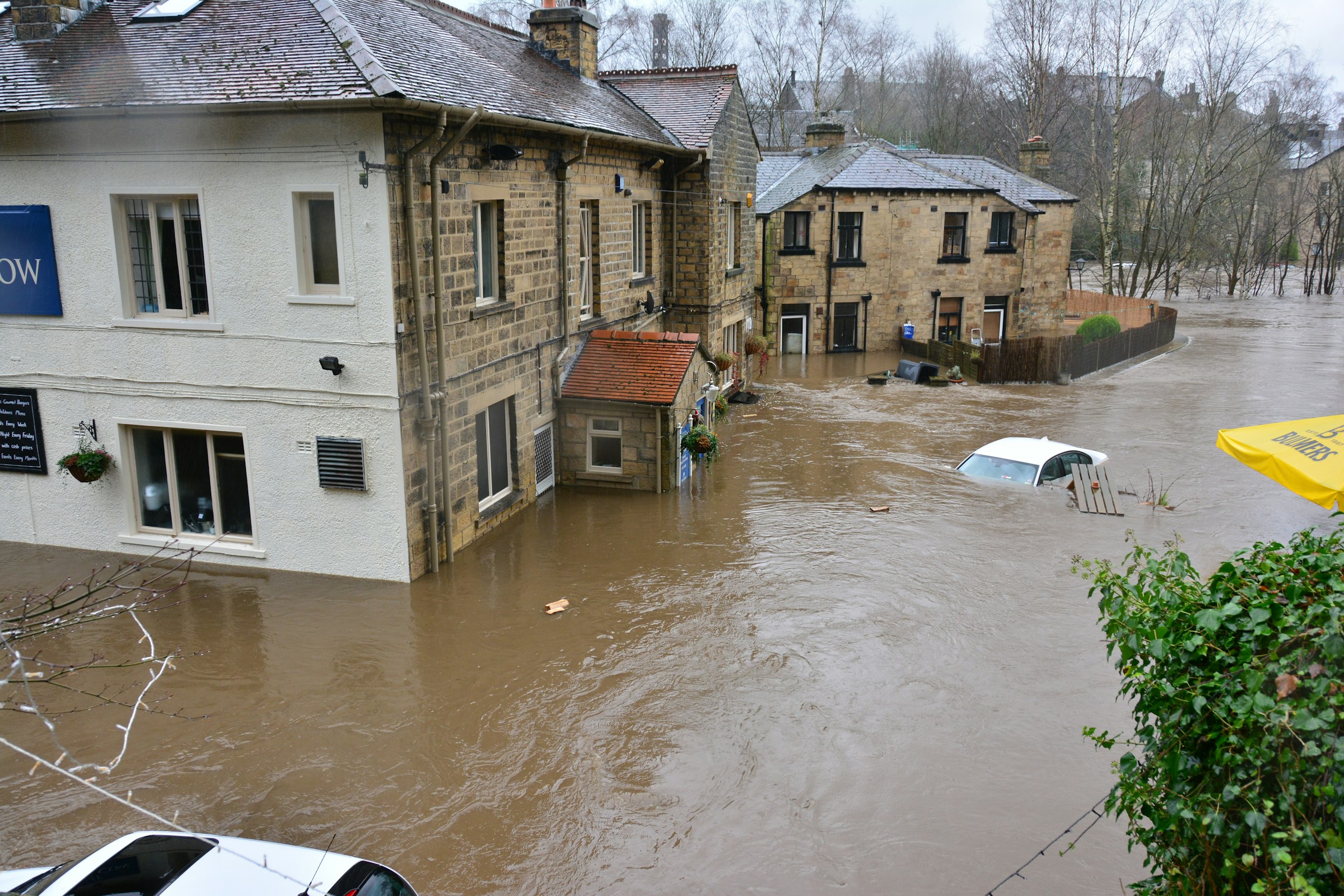How is AI Being Leveraged to Improve the Accuracy of Flood Forecasting in the UK?

In the era of climate change and increasing environmental uncertainty, the significance of accurate flood forecasting cannot be understated. Data-driven models and sophisticated machine learning tools are being integrated into the field of environmental science to predict water overflows and mitigate the risks associated with flood events. The United Kingdom, in particular, is leveraging these tools to enhance its flood forecasting system.
Unlocking the Power of Data in Flood Forecasting
Data has become an indispensable component in the realm of flood forecasting. It helps to understand, anticipate, and strategize for impending floods. By comprehensively analysing historical and real-time data, forecasting models can generate accurate and timely predictions. This section delves into the role of data in forecasting floods and the techniques used to process and analyse it.
A lire en complément : How Is Augmented Reality Transforming the Real Estate Industry with Virtual Tours?
As a long-time scholar of water and climate systems, you are likely aware of the importance of data in predicting floods. Water level measurements, rainfall data, soil moisture content, and other related data form the bedrock of the flood forecasting process. The accuracy of a forecast hinges on the quality and adequacy of the data used to feed the prediction models.
Machine learning-based models, such as the Long Short-Term Memory (LSTM) network, have been successfully adopted in flood forecasting. LSTM, a type of recurrent neural network, is capable of learning long-term dependencies from the data, thereby making accurate predictions even for extended forecast horizons.
A lire également : What Are the Implications of Advanced Encryption Techniques on User Privacy and Security?
In the UK, the Environment Agency collects data from numerous monitoring stations, which is then processed and analysed using advanced analytical tools. Real-time data, coupled with historical records, provide a robust dataset for LSTM models to learn from and generate precise flood forecasts.
Harnessing Machine Learning in Flood Prediction Models
Machine learning models like LSTM have revolutionized flood forecasting. However, understanding how these learning models work and how they are implemented in flood prediction is crucial. This section explores the functionality of LSTM and its effectiveness in flood prediction systems.
Machine learning models, specifically LSTM, are well-suited for time-series data prediction tasks. In flood prediction, the time factor plays a pivotal role, and LSTM, with its inherent ability to remember previous data points, becomes an ideal choice for modeling such data. LSTM models can predict future water levels by learning patterns from past data and understanding the sequence of events leading up to a flood.
The LSTM model learns from the data and adjusts its internal parameters accordingly. This learning process enables it to make accurate predictions about the likelihood of future floods. In the UK, LSTM models have been trained on extensive datasets, encompassing decades of flood data, to enhance the accuracy of their predictions.
Moreover, LSTM’s ability to deal with the ‘vanishing gradient problem,’ a common issue in traditional neural networks, further strengthens its suitability for flood prediction.
Climate Change and the Evolution of Flood Forecasting
Climate change has altered the dynamics of flood forecasting in many ways. Unpredictable weather patterns and more frequent extreme weather events have made accurate flood forecasting more challenging than ever. This section examines the impact of climate change on flood forecasting and how technology and AI are evolving to meet these challenges.
Climate change has been a game-changer for flood forecasting. The unpredictable shifts in weather patterns and the increasing frequency of extreme weather events have made traditional flood forecasting models less reliable. This unpredictability has necessitated the adoption of more adaptive, data-driven approaches in flood forecasting.
AI and machine learning-based models offer this adaptability. These models can learn from the data, adjust to new patterns, and make accurate predictions even in the face of changing weather patterns. This adaptability is particularly important in the UK, where climate change has significantly increased the risk of extreme flood events.
The Role of Google in Shaping the Future of Flood Forecasting
Google, a tech titan with its roots in data collection and processing, has also stepped into the arena of flood forecasting. This section discusses Google’s contribution to this field and how it is shaping the future of flood forecasting.
Google’s Public Alerts system has been at the forefront of the company’s flood forecasting efforts. Leveraging a combination of machine learning, data analysis, and mapping technologies, Google’s system provides a comprehensive, real-time overview of flood situations.
Google’s system uses high-resolution digital elevation models to generate flood inundation maps and forecast water levels. The information is then disseminated to the public via Google Maps and Search, providing critical, real-time flood information to those who are most at risk.
In the UK, Google’s system is being used to supplement existing flood forecasting models. The integration of AI-powered technologies from companies like Google signifies a promising future for flood prediction and management, underscoring the growing significance of AI in environmental science and management.
Forecasting the Future of Flood Forecasting
The future of flood forecasting looks promising, with advancements in AI and machine learning, the increasing availability of data, and the active involvement of tech companies like Google. This section offers a glimpse into the future of flood forecasting and how these advancements might shape it.
The UK is leading the way in the adoption of AI in flood forecasting. With its rich dataset and advanced LSTM models, the UK’s flood forecasting system is becoming increasingly accurate and reliable. The integration of AI into the system has not only enhanced the accuracy of predictions but also extended the forecast horizon.
In the future, we can expect even more sophisticated models, capable of making accurate flood predictions even in the face of the increasing unpredictability brought about by climate change. AI will continue to evolve, becoming an even more integral part of the flood forecasting process. The future also holds the promise of more collaboration between tech companies and environmental agencies, as seen in the case of Google and the Environment Agency in the UK.
The Impact of Big Data and Deep Learning on Flood Forecasting
The adaptation of big data and deep learning into flood forecasting models has revolutionised the way we anticipate and react to potential flood events. This section will delve into the intricacies of these technologies and how they are being utilised to improve flood prediction accuracy in the UK.
Big data refers to the vast amount of data that is generated through various sources such as weather stations, satellites, social media, and more. This data, if processed and analysed properly, can provide invaluable insights into the patterns and trends of flood events. The ability to process and analyse this big data is a crucial element of modern flood forecasting.
Deep learning, a subfield of machine learning, uses neural networks with multiple layers (or "depths") to process data and generate predictions. Deep learning algorithms are particularly adept at handling big data, making them an excellent tool for flood forecasting. One such algorithm is the LSTM model, a recurrent neural network that excels at processing time-series data.
The LSTM model, as mentioned earlier, has the capability to learn from both short-term and long-term data trends, thereby providing more accurate predictions. By feeding big data into LSTM models, the UK’s Environment Agency has been able to generate more reliable forecasts.
For instance, the use of satellite-based remote sensing data, which provides real-time insights into precipitation levels, soil moisture content, and other crucial factors, has significantly improved the lead time and accuracy of flood forecasts. Coupled with the power of LSTM models, this approach has made it possible to deliver accurate forecasts even in the face of the increasing unpredictability caused by climate change.
The Potential of AI in Advancing Flood Prediction
Artificial Intelligence (AI) has demonstrated immense potential in advancing flood prediction. The application of AI in this field is not limited to just prediction models; it also extends to real-time flood monitoring, risk assessment, and disaster response. This section will explore the potential of AI in advancing flood prediction and the ways in which the UK is harnessing this potential.
AI’s capability to learn from and adapt to changing data makes it a powerful tool in flood forecasting. For instance, AI-powered systems can use real-time data to update predictions on the fly, giving communities more time to prepare for impending floods.
Machine learning models, including LSTM, have been instrumental in advancing flood prediction. By learning from the vast amount of historical and real-time flood data, these models can predict floods with improved accuracy.
In addition to machine learning models, neural networks have also proven to be effective in flood prediction. Neural networks are capable of recognising complex patterns and relationships in data, which is particularly useful in flood forecasting where various factors, such as rainfall, soil moisture, and water levels, are interrelated.
AI also has the potential to improve flood risk assessments. By analysing historical flood data, demographic information, and land use patterns, AI can help identify areas that are most at risk of flooding and develop strategies to mitigate these risks.
In the UK, the integration of AI into flood forecasting has already started yielding results. The Environment Agency has reported improved accuracy in flood forecasts, while Google’s Public Alerts system, powered by AI, has been instrumental in providing real-time flood alerts to communities.
Conclusion: Towards a Future of AI-driven Flood Forecasting
The integration of AI and machine learning technologies into flood forecasting represents a significant step forward in the realm of environmental management. Given the increasing environmental uncertainty due to climate change, these advancements provide a much-needed boost to the accuracy and reliability of flood forecasts.
The UK’s proactive approach to leveraging AI for flood forecasting, as exemplified by the work of the Environment Agency and collaborations with tech companies like Google, sets a precedent for other countries to follow. As climate change continues to escalate globally, the need for effective and reliable flood forecasting systems will only increase.
The future of flood forecasting lies in the continual refinement of machine learning models and the exploration of new AI-based methodologies. As the volume and diversity of flood-related data increase, so will the precision of predictions.
In conclusion, while the challenges posed by climate change are significant, the advancements in AI and machine learning hold the promise of turning these challenges into opportunities for improving our understanding and management of flood events. The evolution of AI-driven flood forecasting in the UK is a testament to this promise and a glimpse into the future of environmental management worldwide.
